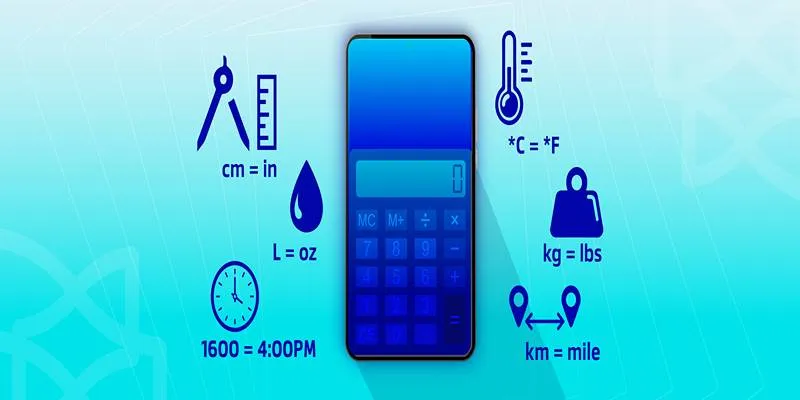Effortless Metric-to-Imperial Conversion in WordPress: A Comprehensive Guide
Unit conversion plays a crucial role in enhancing accessibility and usability for diverse global audiences. In this guide, we’ll explore the concept of unit conversion, its importance, and practical application, especially within WordPress. We’ll also delve into best practices, potential challenges, and resources to aid in effective unit conversion.
What is Unit Conversion?

Unit conversion involves changing a measurement from one unit to another to align with different preferences, standards, or systems. This process is vital across various domains such as science, engineering, business, and daily life. Whether converting between metric and imperial systems or changing temperature units, unit conversion enhances clarity and comprehension for diverse audiences.
Understanding Common Unit Systems
Measurement units are typically divided into the Metric System and the Imperial System. Most countries utilize the metric system, which includes meters, kilograms, and liters. Conversely, the imperial system, primarily used in the United States, comprises units like feet, pounds, and gallons. Bridging these systems is essential for effective global communication.
Real-World Applications of Unit Conversion
Unit conversion is prevalent in everyday scenarios:
- Travel: Converting speed limits from kilometers per hour (km/h) to miles per hour (mph).
- Food Recipes: Converting gram measurements to ounces in ingredient listings.
- Science and Engineering: Converting critical measurements such as pressure or energy to universally accepted units.
- E-commerce: Displaying product weights or dimensions in both metric and imperial measurements to cater to international customers.
Why Is Unit Conversion Important?
Unit conversion enhances inclusivity and comprehensibility, thereby improving user experience. Here are several reasons why it is indispensable:
1. Accessibility
Providing measurements in universally understood formats enables all users to utilize the same information effectively. This is particularly crucial in sectors like aviation, science, and international supply chains.
2. Cross-Cultural Communication
Different countries adhere to various measurement systems. Adapting to a user’s specific standard respects regional and cultural preferences, minimizing confusion.
3. Enhancing User Satisfaction
Correct unit conversions enhance user satisfaction, from inputting product dimensions on an e-commerce site to interpreting weather reports. Consistency in conversions reflects professionalism and meticulous attention to detail.
4. Preventing Costly Mistakes
Incorrect or absent unit conversions can lead to significant errors. For instance, faulty unit transformations in scientific experiments or engineering calculations could result in wrong conclusions or defective designs.
Tools and Plugins for Unit Conversion in WordPress
WordPress offers a variety of plugins to simplify and automate unit conversion tasks. These tools are invaluable for websites frequently dealing with multiple units, such as e-commerce platforms, engineering blogs, or educational sites. Popular plugins include “Measurement Unit Converter,” “WooCommerce Unit of Measure,” and “Unit Conversion for WP.”
Features and Functionalities to Look For
When choosing a unit conversion plugin, consider key features such as:
- Comprehensive Unit Libraries: Support for diverse units, including distance, weight, volume, and temperature.
- Customizable Conversion Options: Ability to add custom units or modify conversion factors.
- Automatic Integration: Compatibility with website themes and platforms like WooCommerce.
- User-Friendly Interface: Intuitive design for administrators and users.
- Real-Time Conversion: Instant calculations that update dynamically.
Examples of Effective Plugins for Unit Conversion
- Measurement Unit Converter: Provides a wide range of units for real-time conversions directly on the website.
- WooCommerce Unit Of Measure: Ideal for e-commerce, it adds measurement units to product listings, ensuring clarity for international customers.
- Unit Conversion for WP: A versatile tool that integrates seamlessly with WordPress pages and posts.
How to Implement Unit Conversion

Implementing unit conversion on your website can be straightforward if you follow these steps:
- Install the Plugin: Download and install the chosen plugin from the WordPress repository or a trusted source.
- Configure Settings: Adjust the plugin’s settings to meet your website’s and audience’s needs.
- Test the Functionality: Ensure conversions are accurate and work seamlessly across the site.
- Monitor Usage: Regularly check performance and update the plugin for compatibility and reliability.
Tips for Automatic vs. Manual Conversions
Automatic conversions save time and reduce errors, while manual conversions offer flexibility for unique scenarios. Choose the method that best suits your website’s needs.
- Automatic Conversions: Enable real-time functionality for tools like e-commerce checkouts.
- Manual Conversions: Opt for manual options when customization is critical, such as in scientific applications.
Customizing Conversions for Your Site
Tailor the plugin to align with your site’s goals by:
- Adding niche units relevant to your industry.
- Adjusting design elements to match your branding.
- Integrating conversions into targeted sections for enhanced functionality.
Best Practices for Unit Conversion
Following best practices ensures effective and consistent unit conversion, vital for clear communication and precision, especially in global or technical contexts.
1. Maintain Consistency Across Platforms
Users should encounter the same units consistently across various content segments. This reduces confusion and ensures a seamless experience, particularly for audiences used to different measurement systems.
2. Automate Where Possible
Automated tools can significantly reduce human error and improve efficiency. Implement reliable software solutions that update automatically to reflect the latest standards.
3. Test and Validate Outputs
Regular testing ensures conversion outputs align with expectations and maintain accuracy. Cross-check with reliable sources to validate both inputs and results consistently.
Conclusion
Unit conversion is more than simple calculations — it’s a gateway to inclusivity and global comprehension. Implementing thoughtful practices ensures your audiences receive clear, valuable, and accessible information. Explore specialized tools and resources to refine your conversion processes and deliver exceptional results in every context.
Related Articles

PowerPoint Image Compression: Reduce File Size Without Sacrificing Clarity

Online Engineering Tools: Free Converters for Every Measurement

How to Bulk Resize Large Images in WordPress Without Losing Quality

How to Limit Heartbeat API in WordPress: Beginner-Friendly Methods

How to Capitalize All Letters in Word, Excel, and Other Apps: A Complete Guide

The Best Methods to Convert Videos to MP4, MP3, and Other Formats

How to Capitalize All Letters in Word, Excel, and Other Apps: A Complete Guide

Step-by-Step Tutorial: Adding Tweets to Your WordPress Posts

10 Easy Steps to Build Your Free Email List Using WordPress

How to Use AdRotate for Effective Ad Management

How to Generate and Add QR Codes in WordPress: An Easy Step-by-Step Tutorial

Best Batch Video Converters of 2025 for PC, Mac, and Online
Popular Articles

PickU Photo Editor & Cutout: A Complete Review of Features & Performance

Whitelisting Guide: Allow Safe Websites Blocked by Antivirus

Offline Loom Alternatives: The Best 5 Tools for Screen Recording

Google Meet vs. Zoom: Which One Stands Out in 2025?

Unlocking HDR Magic: How to Get a Free Copy of Photomatix Essentials

How to Capitalize All Letters in Word, Excel, and Other Apps: A Complete Guide

Discover the 4 Best Journal Apps in 2025 to Boost Your Writing Routine

The 5 Best Bitrate Converters to Enhance Your Media Experience

Mind-Blowing AI Art Generators in 2025 That Are Redefining Creativity

Best Online Community Tools for Group Engagement

Top Free Tools to Convert MTS/M2TS to AVI Quickly and Easily

 mww2
mww2